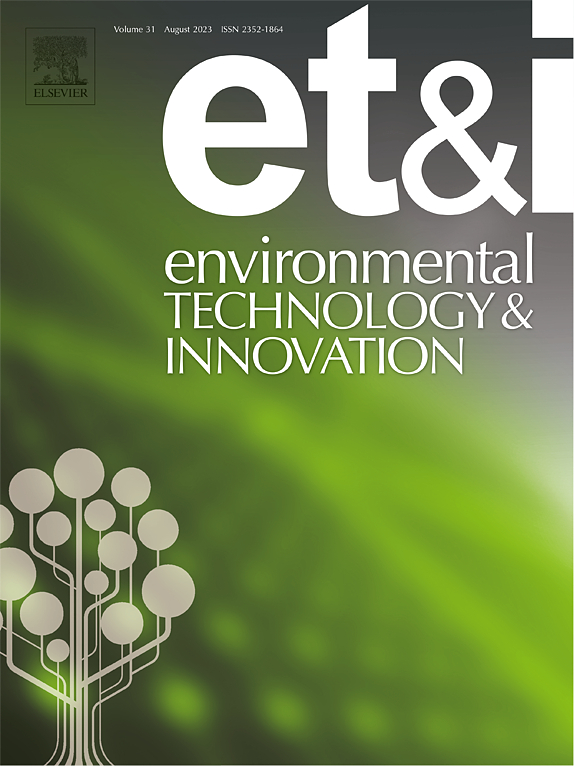Impact of SiO2 and CaO on Cr(VI) formation during heat treatment of Cr(III)-bearing sludge
IF 6.7
2区 环境科学与生态学
Q1 BIOTECHNOLOGY & APPLIED MICROBIOLOGY
引用次数: 0
Abstract
There is a key issue about formation of highly toxic and easily dissoluble Cr(VI) during heat treatment of Cr-bearing solid waste, resulting in a prominent increase of environmental risk of incineration product. In this study, the effects of CaO and SiO2 on formation and reduction of Cr(VI) were investigated during heating of Cr-bearing simulated sludge (Cr-SS) and Cr2O3, exploring Cr(III) oxidation mechanism. The findings indicates that doping CaO significantly promotes Cr(III) oxidation to Cr(VI), and chromium speciation vary with temperature. At 300℃, leaching amount of Cr(VI) in Cr-SS samples increases sharply to 9.3 % of total Cr. In contrast, no Cr(VI) was detected in Cr2O3 samples. Above 300℃, oxidation rates of Cr(III) in different samples of Cr-SS and Cr2O3 exhibit the same trend with temperature increasing. Above 1000℃, new Cr-containing crystalline phases were observed, like CaCr2O4 and Ca3(CrO4)2. The oxidation rate of Cr(III) is positively connected with the adding amount of CaO. Besides, doping SiO2 to sludge prominently inhibits Cr(III) oxidation or facilitate Cr(VI) reduction at 600℃-1200℃, which is also confirmed by thermodynamic calculation, attributing to formation of Ca5Cr2SiO12 and CaCr2O4. The number of holes in valence band will be changed through substitution of Cr(III) ions by cations of different valence states, thus facilitate or inhibit Cr(III) oxidation. The ions (<III) can promote Cr(III) oxidation, while ions (>III) can inhibit Cr(III) oxidation and promote Cr(VI) reduction. Introducing SiO2 or Si-enriched materials to chromium-bearing wastes may be a promising alternative to solve the problem of highly toxic Cr(VI) formation during heat treatment.
求助全文
约1分钟内获得全文
求助全文
来源期刊

Environmental Technology & Innovation
Environmental Science-General Environmental Science
CiteScore
14.00
自引率
4.20%
发文量
435
审稿时长
74 days
期刊介绍:
Environmental Technology & Innovation adopts a challenge-oriented approach to solutions by integrating natural sciences to promote a sustainable future. The journal aims to foster the creation and development of innovative products, technologies, and ideas that enhance the environment, with impacts across soil, air, water, and food in rural and urban areas.
As a platform for disseminating scientific evidence for environmental protection and sustainable development, the journal emphasizes fundamental science, methodologies, tools, techniques, and policy considerations. It emphasizes the importance of science and technology in environmental benefits, including smarter, cleaner technologies for environmental protection, more efficient resource processing methods, and the evidence supporting their effectiveness.
 求助内容:
求助内容: 应助结果提醒方式:
应助结果提醒方式:


